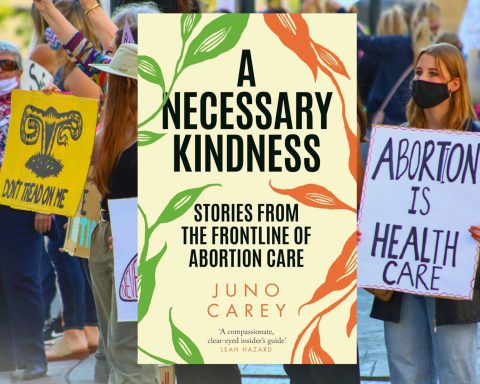
Hannah Barnes is an investigative journalist who works for the BBC. She was the lead journalist investigating the care of young people with gender-related distress for Newsnight, prior to the CQC inspection that assessed The Tavistock’s Gender Identity Development Service (GIDS) as inadequate. As I expected, she approached this book in a very rigorous way. She sought to read any available document about GIDS (publicly available and her own freedom of information requests), interviewed (and invited to interview) anyone she could and made sure all comments were verified. There are 59 pages of references and notes at the end of the book! The book is heavy going at times, but I felt it tried to set out the concerns, as well as positive reports, of previous employees, patients and their families at GIDS in a fair and balanced way.
The title “Time to Think” alludes to the claims made that puberty blockers provide ‘time to think’ or explore gender dysphoria rather than immediately progressing to transition to a different gender. She shows, through her investigations, that the puberty blockers really don’t seem to give young people time and space but appear to put them on a medical track towards a life of hormone injections and surgery.
Barnes comes across as a compassionate writer who tries to understand the patients and clinicians as individuals as well as exploring the systems and larger themes.
Barnes comes across as a compassionate writer who tries to understand the patients and clinicians as individuals as well as exploring the systems and larger themes. She intersperses the book with case studies of former patients from their own perspective and this helps to keep the reality of individuals in mind. Transgender health is an area of medicine that has become highly polarised and politicised, but I felt she tried to look objectively at how GIDS was run and what went wrong.
Barnes begins by explaining how GIDS was started back in 1989 by Domenico Di Ceglie as a very specialist and small service, through to Polly Carmichael, today’s charismatic and passionate lead clinician. She documents service reviews hidden from scrutiny, high profile court cases, the rapid expansion of the service and consequent influx of junior staff, Sonia Appleby’s employment tribunal, the changing demographic of referrals over time and the high turnover of staff.
The book makes it clear that the data collection and analysis of treatment outcomes was severely lacking at GIDS. For some patients, there wasn’t clear documentation of biological sex, inadequate documentation of comorbidities (for example, autism / depression / anxiety) and whether young people decided to revert to their biological sex and why. This is shocking to me, given that some of these patients will have had not only irreversible hormonal changes to their body but also major surgery (and associated complications), unknown future health outcomes and for many, known infertility. “The Dutch Protocol”, was dissected by Barnes and worryingly seems to be based on a case study and a small intervention study of 54 young people with short term and incomplete follow up. GIDS began a study using a similar protocol in 2011 that allowed children from the age of 12 to receive puberty blocking hormonal treatment. This was an observational study that can’t have been fully evaluated before rolling out the protocol more widely in 2014. It is still not known the long-term implications of medical management of gender dysphoria or if there is an alternative.
The book doesn’t give any answers about how a gender service should be run but I think it could become a positive turning point in transgender healthcare.
There were some alarming statistics that Barnes managed to ascertain: 35% of referrals to GIDS included an autism diagnosis (she quotes 2% within the general population), but some clinicians felt that there was no concern or curiosity about this within the service. Could the rigid thinking that can be associated with autism confuse the diagnosis of gender dysphoria? There was a much higher that general population proportion of young people that were not living within their family of origin. What is it about family disruption and difficult relationships that seems to be associated with identifying as trans?
It was concerning to read that there was a suggestion of homophobia within the service and within the patients and families being seen. There were a small proportion of young people who felt (or their family felt) more able to accept a trans child than a gay child. Of all biologically female people referred to GIDS in 2012 over 90% were same sex attracted (it was 80% for biologically male people). It feels unethical to medically treat an individual for a wider societal homophobia.
There seemed to be many factors that contributed to the problems at GIDS: pressure of referrals leading to a reduced assessment capability, lack of psychological support for highly distressed young people, poor explanation of clinical uncertainty and over involvement of patient support groups (such as Mermaids and GIRES). Instead, it was assumed that “mental health” was dealt with by local CAMHS and GIDS dealt with treating the gender dysphoria, mostly with medication. GIDS has an “affirmative” and medical approach that means that a child is assumed to be trans if that is what they say. It is concerning that this approach could close the door to further discussion of uncertainty or alternative ways of coming to terms with personal identity.
Hannah Barnes has fastidiously documented the decades of issues at GIDS in a way that makes me concerned about the treatment of gender dysphoric and highly distressed young people in the UK. The book doesn’t give any answers about how a gender service should be run but I think it could become a positive turning point in transgender healthcare.
Featured book: Time to Think: The Inside Story of the Collapse of the Tavistock’s Gender Service for Children by Hannah Barnes
Swift Press, Feb 2023, 466 pages, ISBN: 978-1800751118, RRP £20 (hardback)
Featured photo by Icons8 Team on Unsplash








